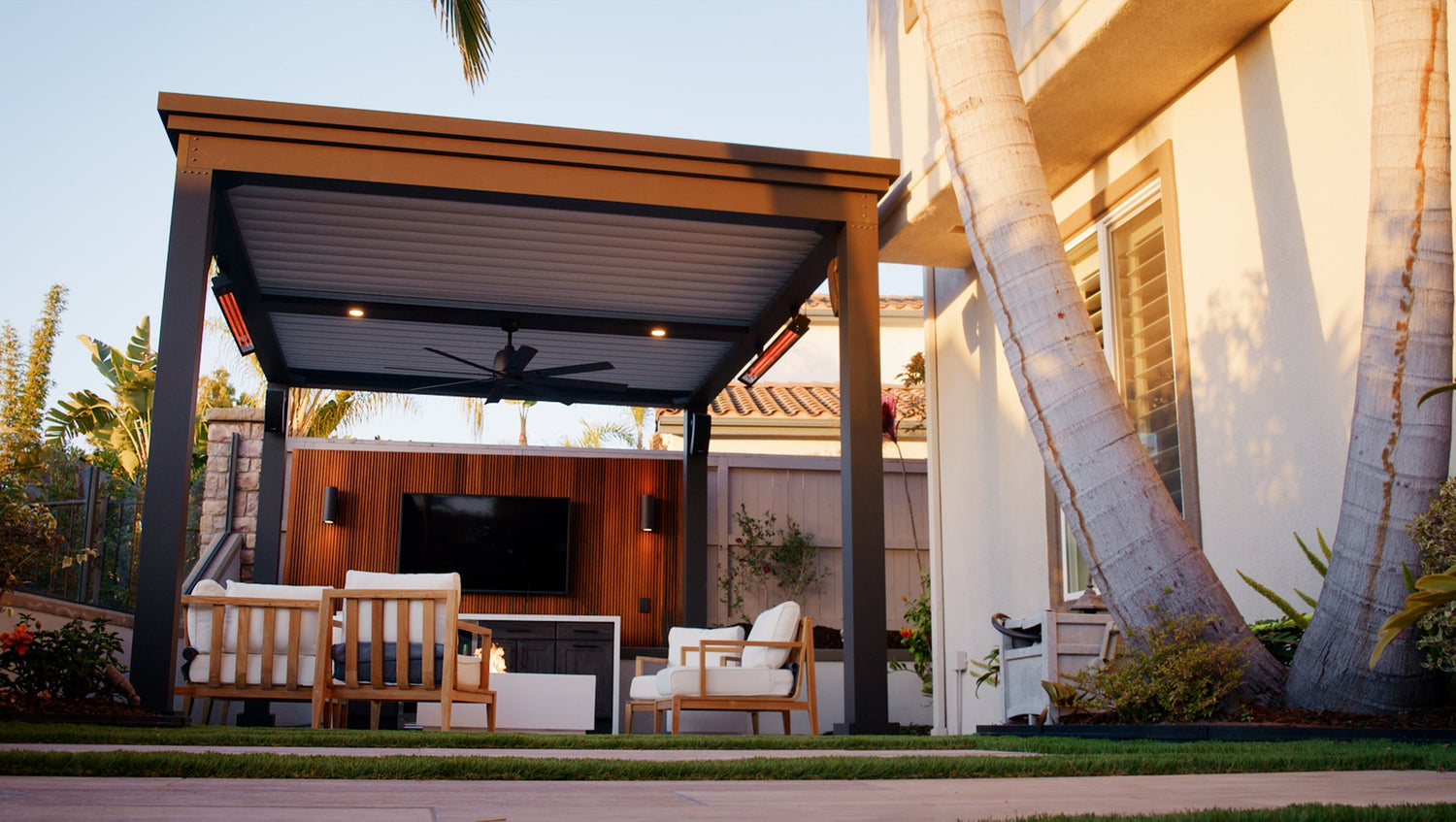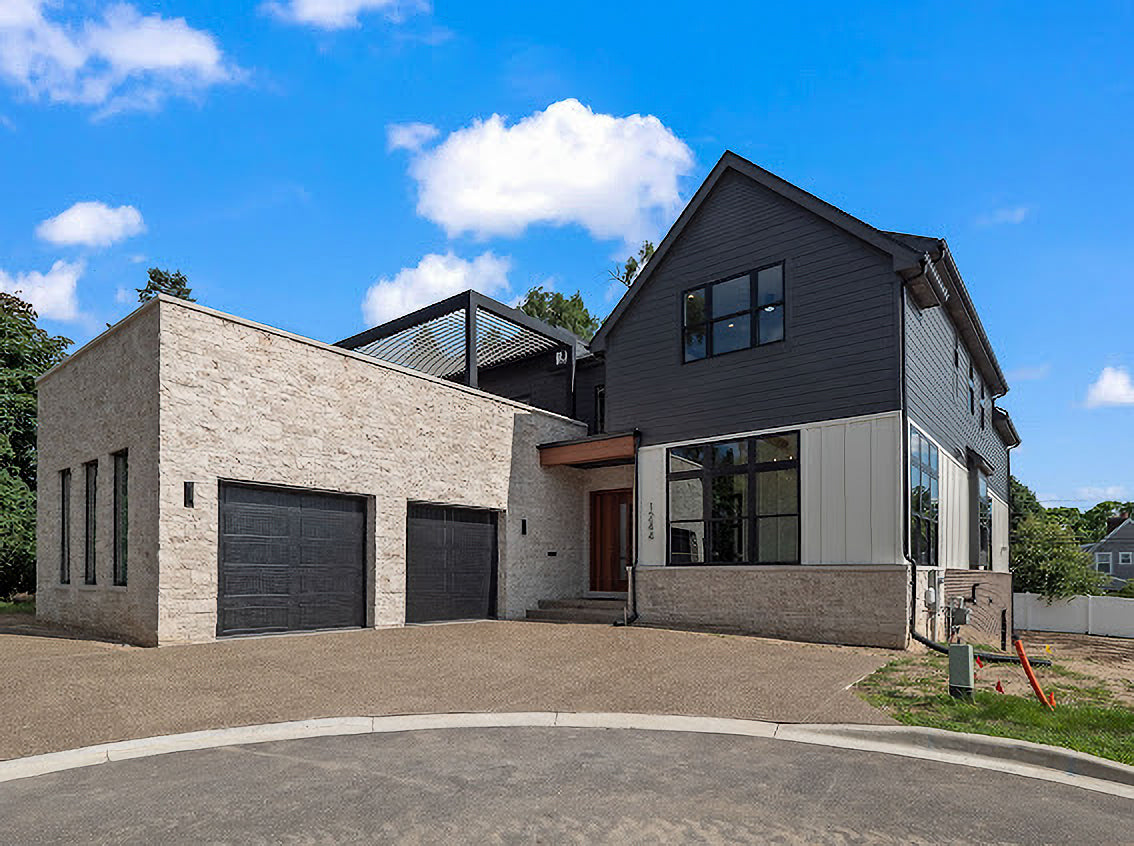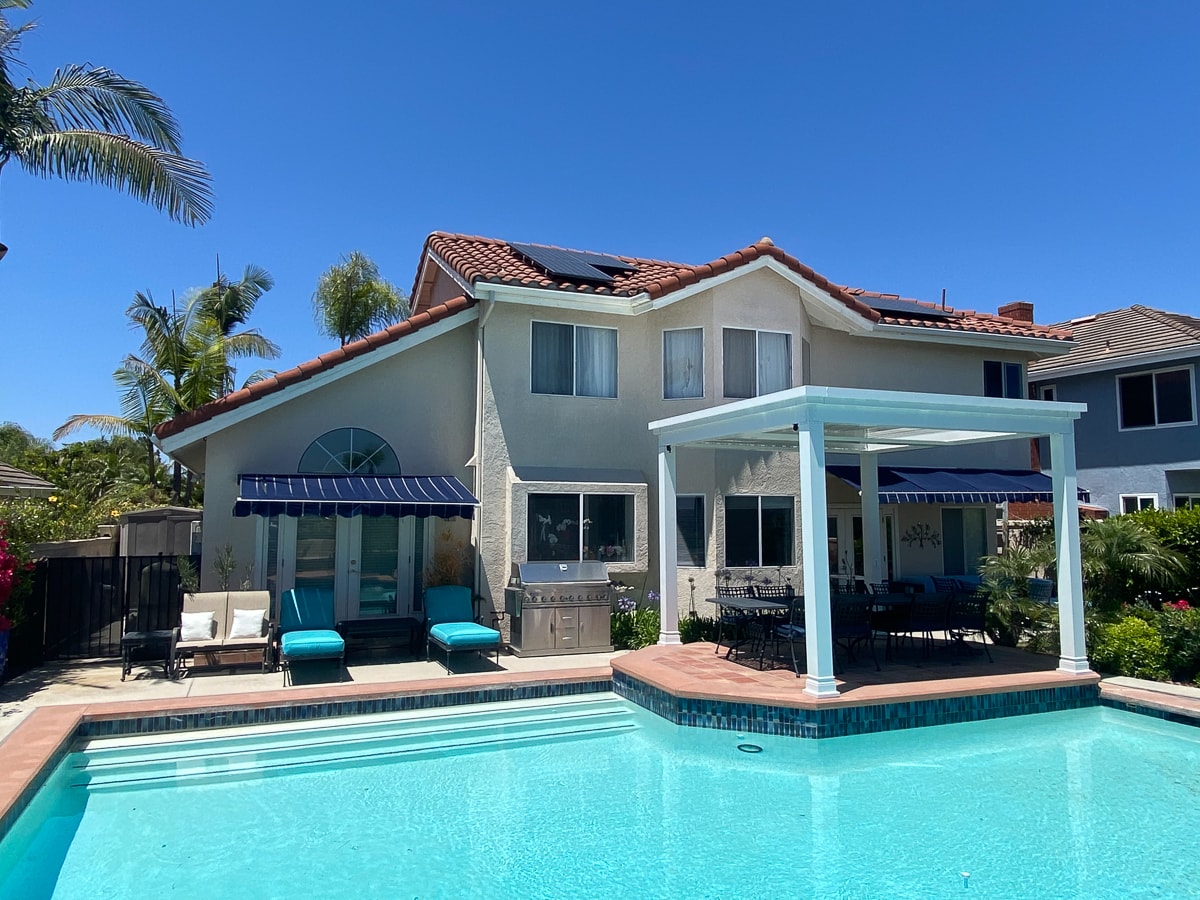How Tall Should a Pergola Be? Essential Height Guidelines for Your Space
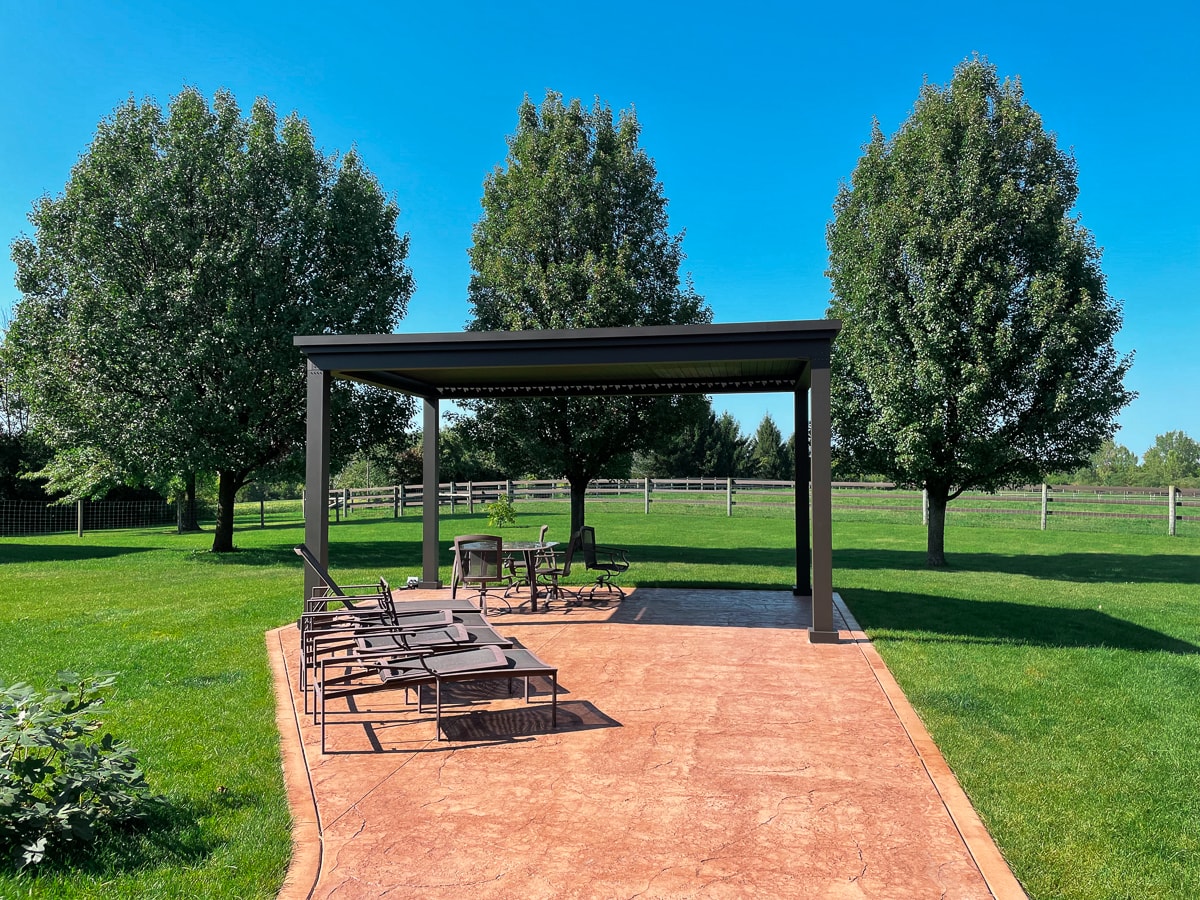
Table of Contents
- How Tall Should a Pergola Be? Essential Height Guidelines for Your Space
- Understanding Pergola Heights
- Assessing Your Outdoor Space for Pergola Height
- Design Considerations for Your Pergola
- Enhancing Your Pergola with a Pergola Roof
- Benefits of a Taller Pergola
- Additional Features to Consider
- Local Regulations and HOA Restrictions
Understanding Pergola Heights
Standard Pergola Height
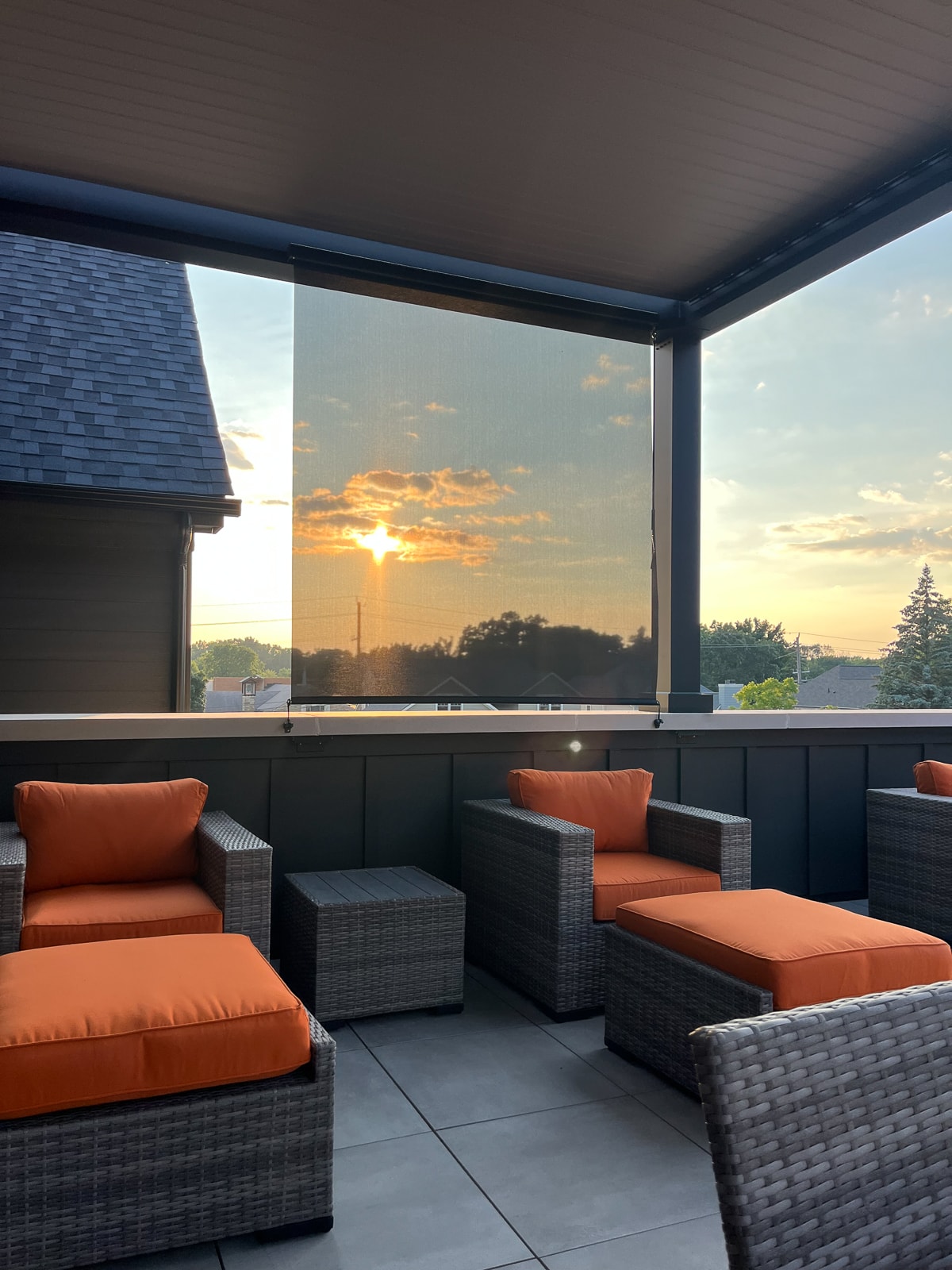
When considering a standard pergola height they typically will range from 8 to 12 feet, providing you with a balance of shade and ventilation. This height range is ideal for most outdoor living spaces, allowing for comfortable movement and relaxation ensuring you have enough space for an overhead fan or heater.
A 10-foot pergola is a popular choice, offering ample headroom and a sense of openness giving you a nice continuance feel from inside your home to outside. Consider the design aesthetic of your home when choosing a standard pergola height. Often having a taller exterior structure gives you a more free feeling in your outdoor space.
Ensure the pergola’s height is appropriate to the house's details and surrounding landscape. Make sure you are not blocking any doors or windows when measuring the space!
Minimum and Maximum Pergola Height
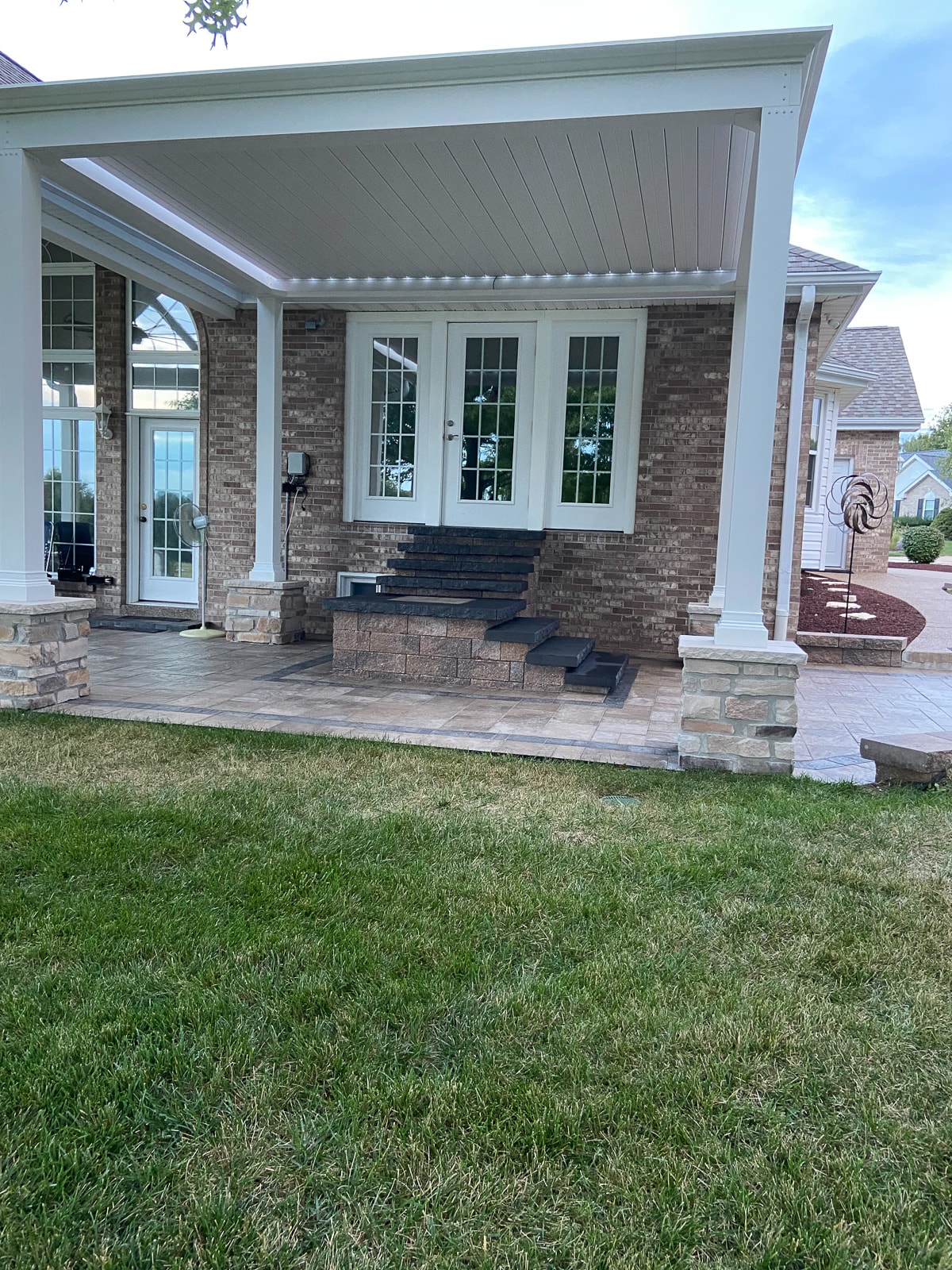
The minimum recommended height for a pergola is 7 feet 6 inches. This height while still pretty enclosed will be tall enough to continue providing enough clearance for comfortable movement.
The maximum height of a pergola can differ from state to state, even county to county. This is often determined by local building regulations and HOA restrictions.
Taller pergolas can offer more efficient and enhanced air circulation but may require additional support and maintenance. Consider this, the taller your pergola is, the more wind load that pergola will take on. This has a lot to do with the "umbrella effect" which is why proper installation is vital!
Assessing Your Outdoor Space for Pergola Height
Home Architecture and Surrounding Landscape
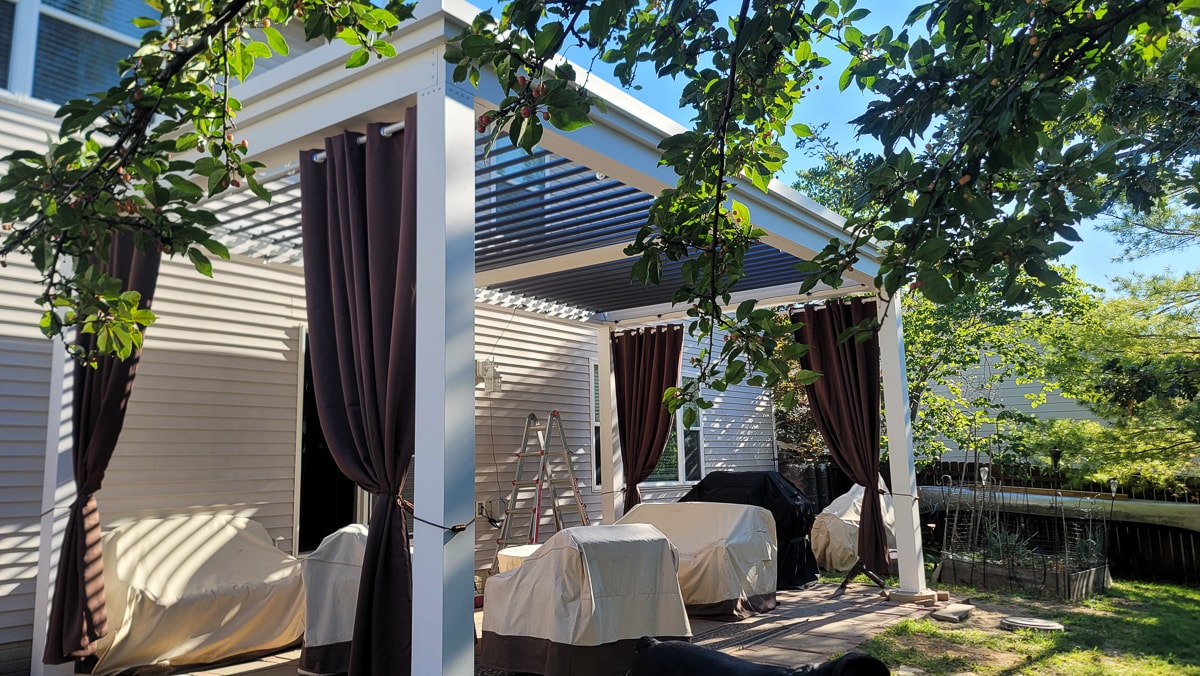
You want to create a beautiful space that is welcoming and relaxing. Consider giving yourself ample space to move around and entertain. This is most important when first walking into the space.
Make sure that you have proper clearance for what you are looking to do with the space. If there are fans and accessories expected in the planning, consider the width length and height of your pergola.
Opt for a taller pergola to complement tall shrubs or trees if you are aiming to have a welcoming nature in your space. When planning the placement of your pergola, ensure that it will not block any existing common walkways, doors, or windows.
Plan out the space with chalk or markers to get a good idea of the size of the pergola that is appropriate for the area.
Intended Use of Outdoor Living Space
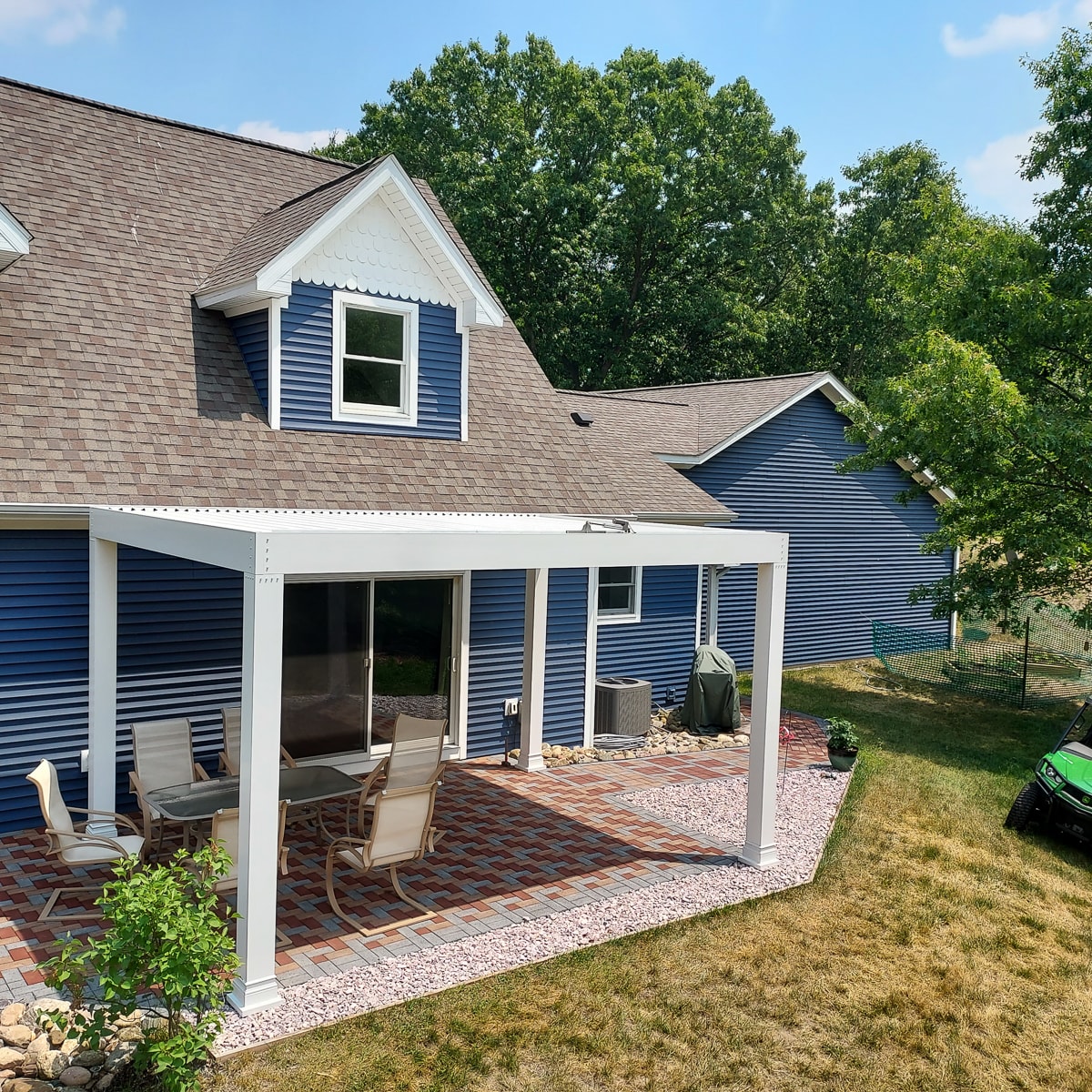
Determine the perfect pergola height based on intended usage. Often times with outdoor kitchens, and lounge areas there is a desire for overhead fans. An outdoor fan is a great way to help pull and cycle the hot air up and out of the space.
Consider this factor when looking at the height of your clearance. If you are looking to add a fan it may be wise to discover the measurement of your chosen fan when installed. This way you can ensure that you have enough space underneath and not have to worry about hitting your head on a fan.
There are many solutions for lighting, you do not have to go with an extruded light. Consider accent lighting or recessed lighting to avoid needing additional clearance if you are working with a tighter space.
Always check with local building codes to ensure that there are no restrictions on pergola heights in your area.
Design Considerations for Your Pergola
Functionality and Proportion
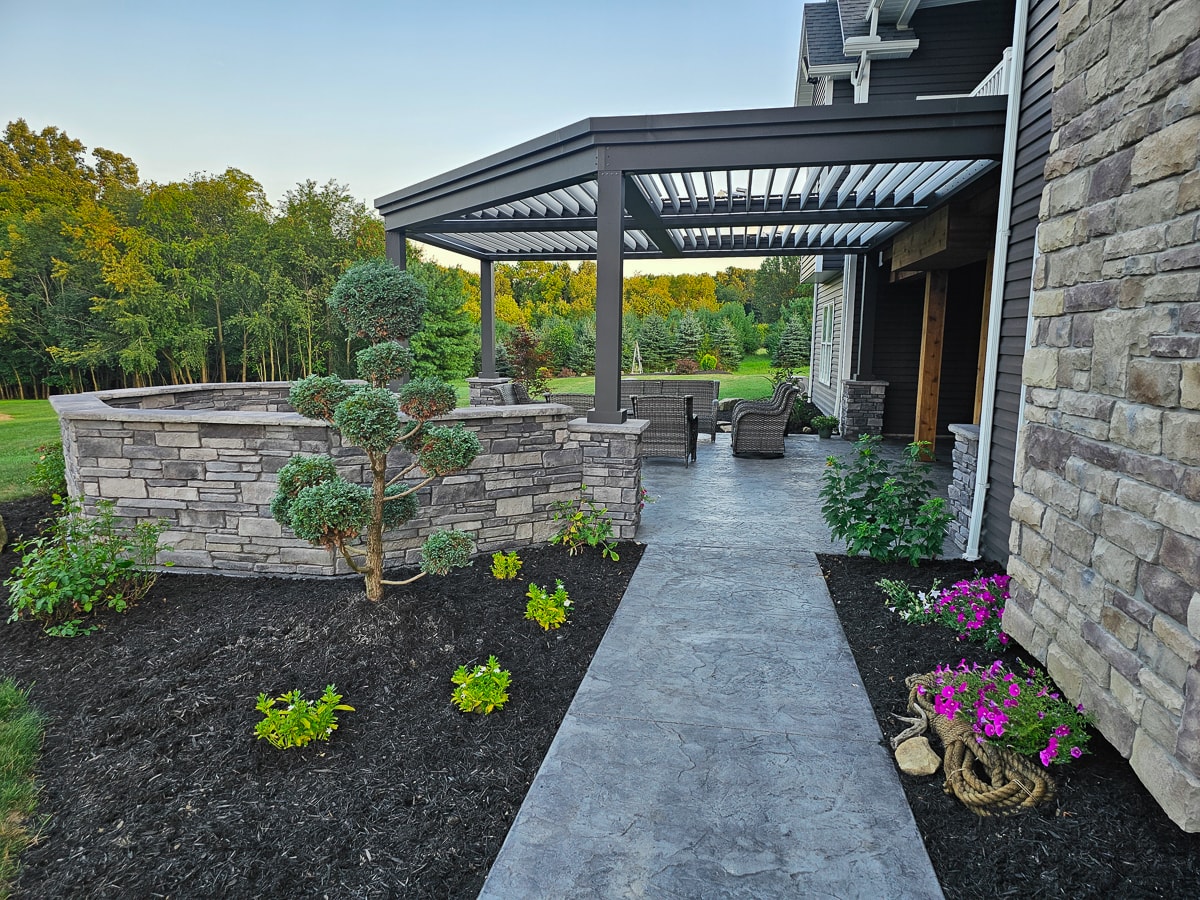
Understanding the primary purpose of your pergola is the first step in determining its ideal height. As we have discussed, you should ensure that your purpose for the space will have enough room to accomplish what it is being built for.
A lower-height pergola space may be sufficient for creating an intimate and sheltered space with little movement purpose, while a taller structure might be more appropriate for defining a larger outdoor area or serving as a more active environment to move around in.
Matching height and the intended functionality ensures that the pergola not only looks good but serves its purpose effectively. If you have to duck to walk into the space, it would not be a comfortable experience. Keep this in mind.
Enhancing Your Pergola with a Pergola Roof
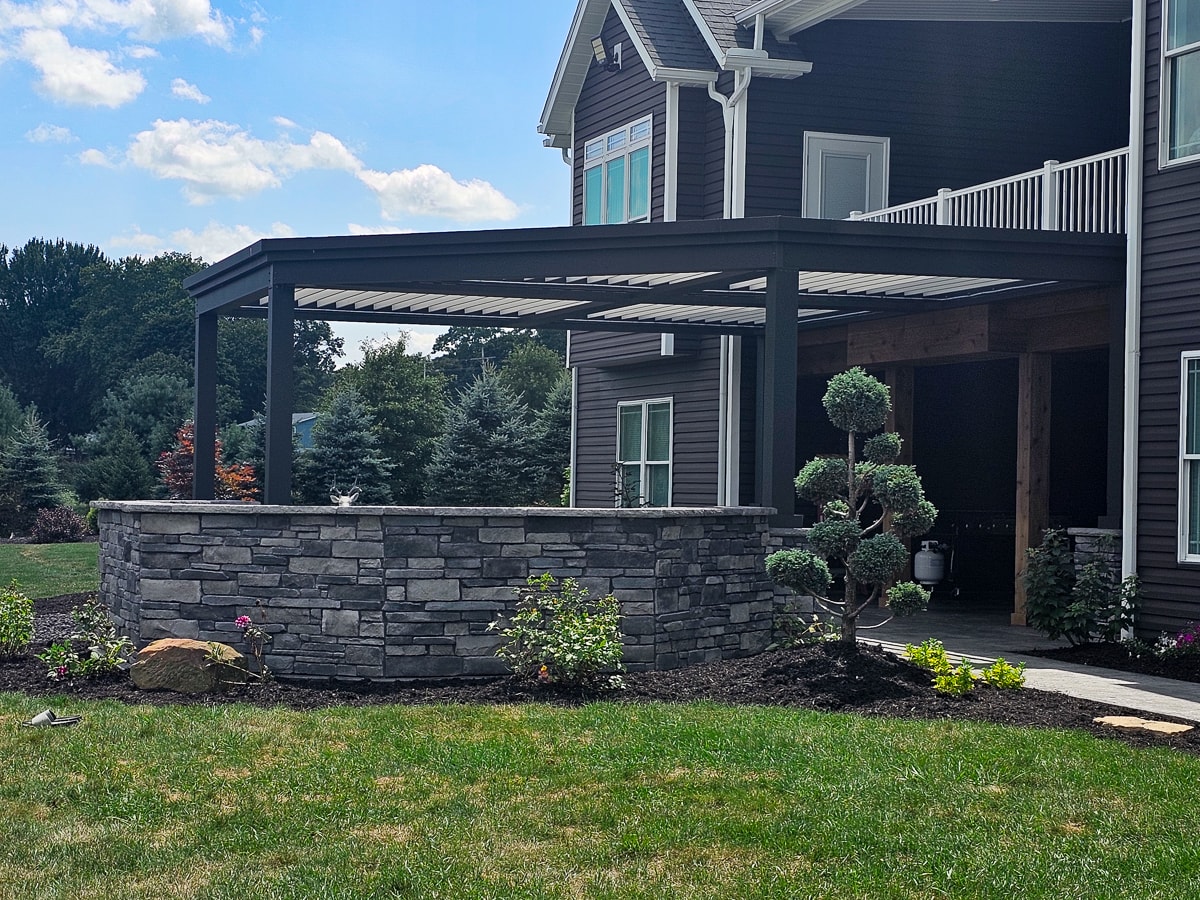
A louvered pergola roof can enhance not just the aesthetic appeal but also the functionality of your outdoor space.
Consider that the traditional fixed louvered roof type of pergola does not allow adjustment throughout the day. Gives you times during the day when the sun is not protected and can be invading your space giving an uncomfortable experience. Find a roof that suits your design preferences and climate.
Benefits of a Taller Pergola
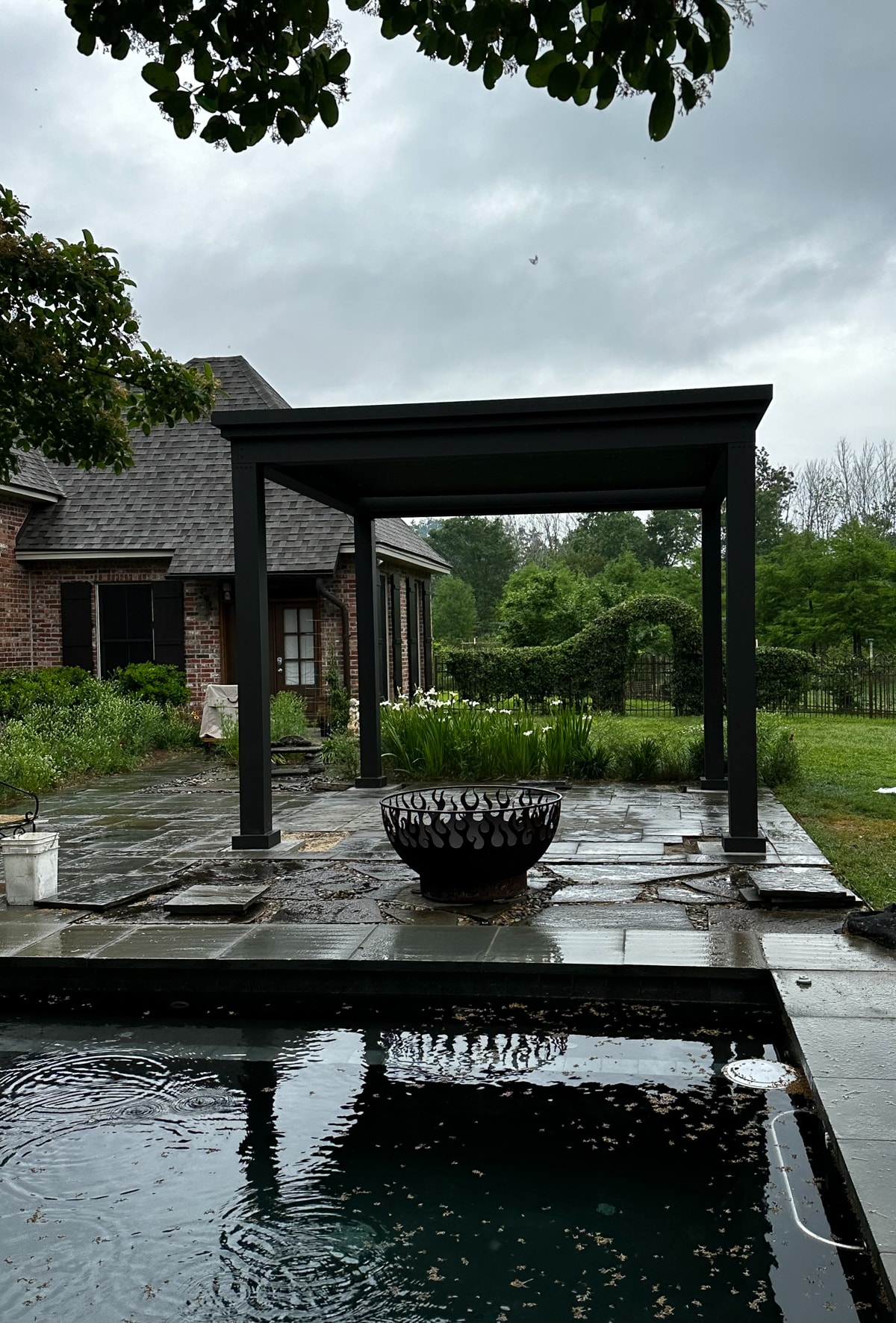
A taller pergola can offer more air circulation for those hot days. A taller pergola also allows for more entertainment options underneath, such as standing heaters and fans, wall-mounted TVs, and overhead accessories.
Consider the benefits of a taller pergola when planning out your project, the cost differences for height increase are minimal,
Ensure the taller pergola is stable and secure with your requirements for wind and snow loads.
Additional Features to Consider
Ceiling Fans and Lighting
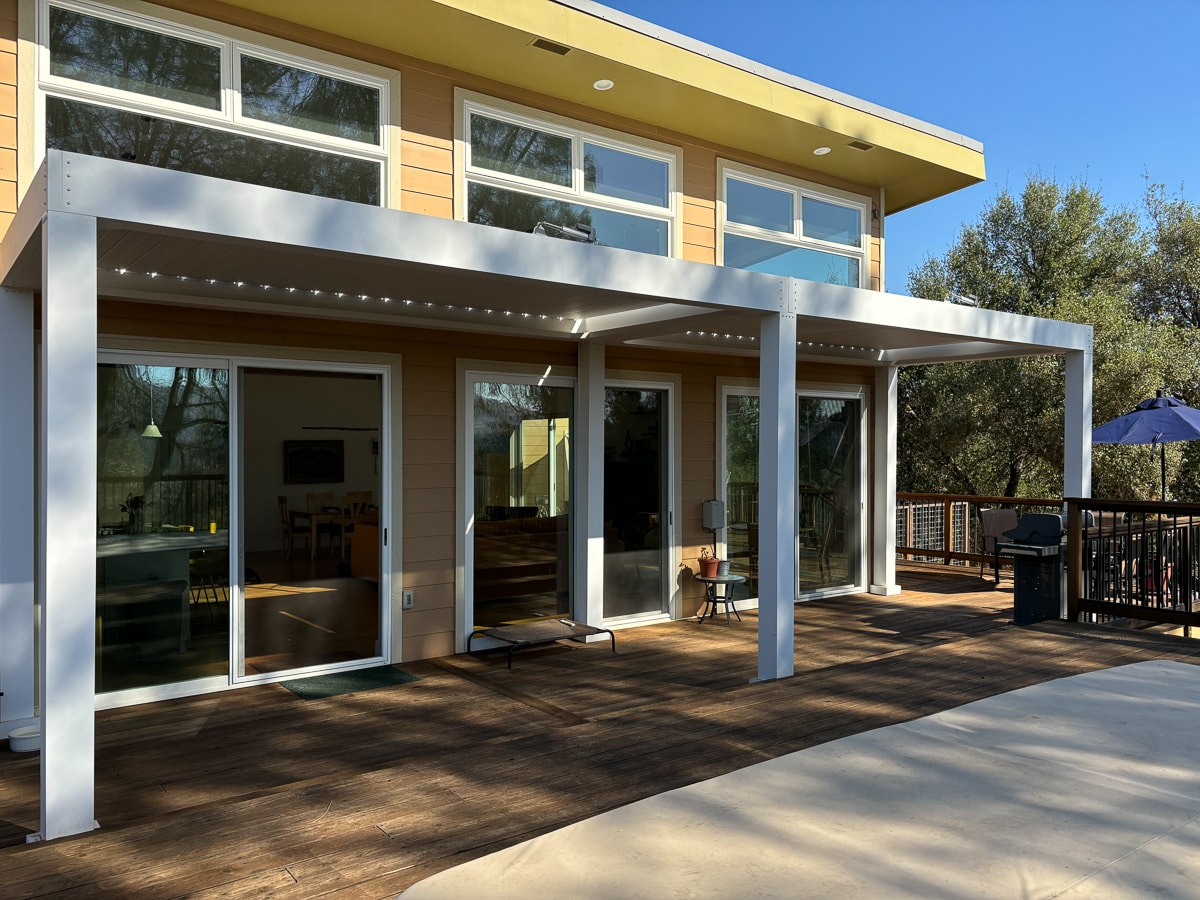
Double-check with your accessories measurements to ensure the necessary clearance for ceiling fans and lights.
Aim for a minimum of seven feet from the ground to the fan blades. Free haircuts are nice, but only if they are good haircuts.
Explore various lighting options, and consider recessed lighting or accent lighting if the space can't accommodate a lowered fan or light.
Climbing Plants and Curtains
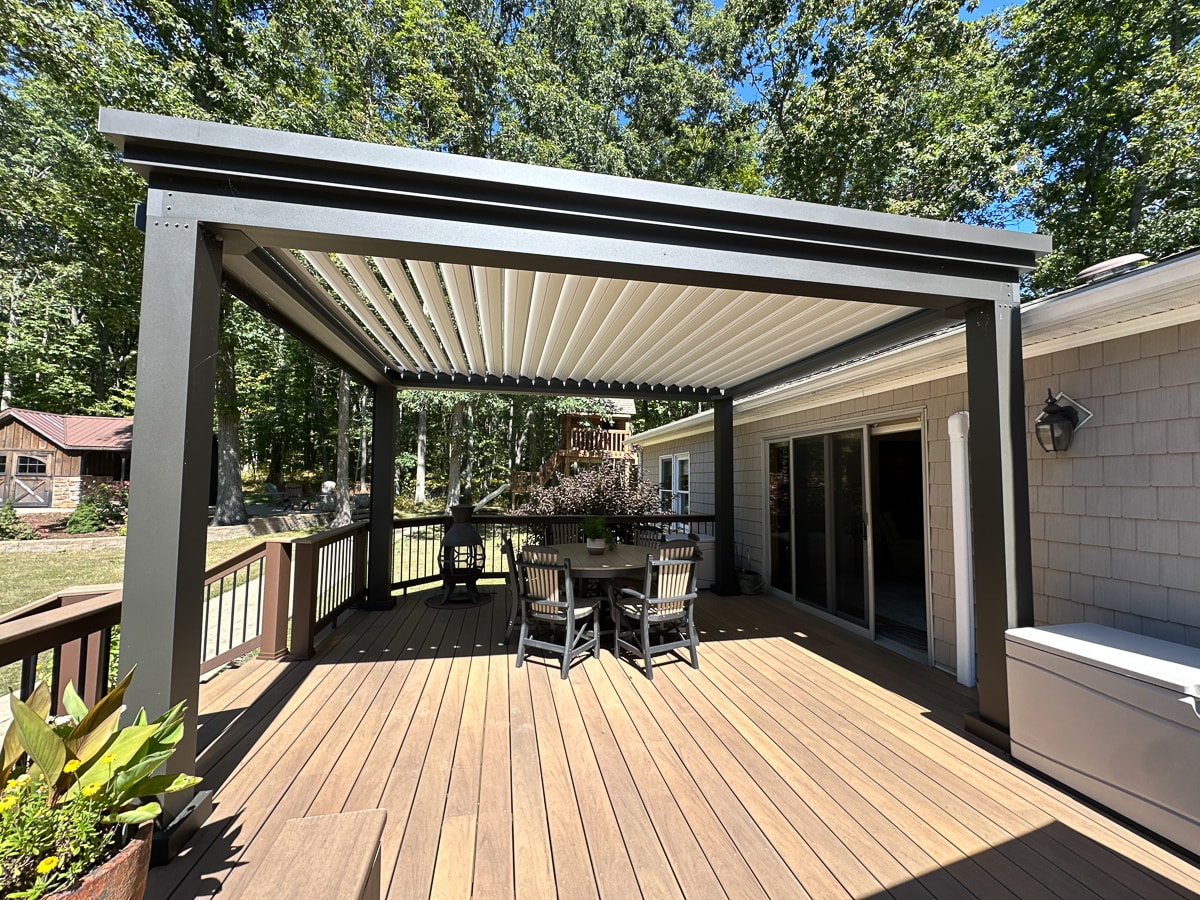
Installing nice hanging plants and curtains can add a calming nature to the space. Give yourself that home feeling outside to take the comfort that space offers to the next level!
Having smaller features like comfortable seating, and throw blankets with pillows are great and cheap ways to enhance your outdoor experience.
Consider installing a privacy wall or shade to give your space more privacy from neighbors or roadways.
Local Regulations and HOA Restrictions
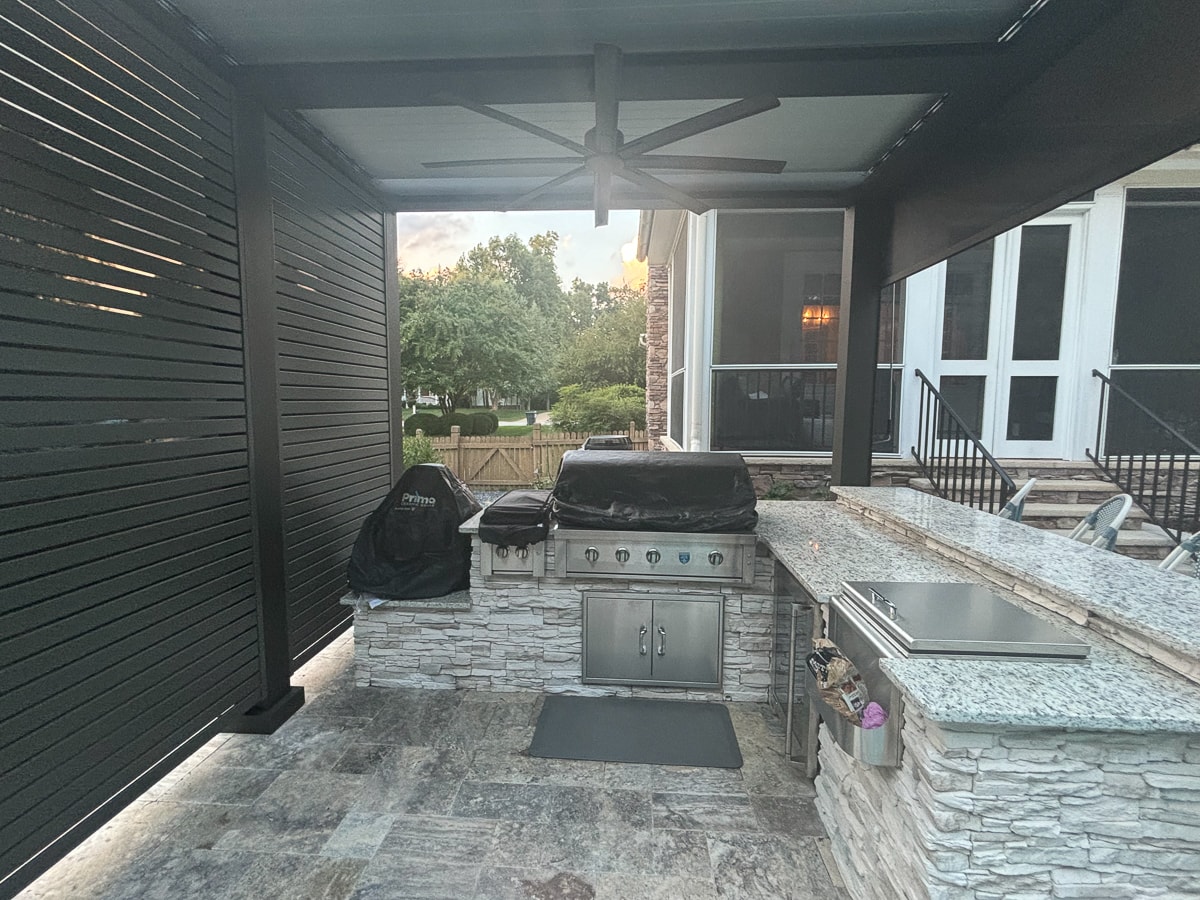
Familiarize yourself with local ordinances and HOA guidelines before building your pergola. Always check with your city on the plans you have to make sure they don't have problems with what you are hoping to do! Always ensure the pergola height and design align with community standards and building codes. Ignoring these could lead to hefty fines or the need to dismantle the structure.
If you are uncertain or would like assistance, consider hiring a professional contractor in your area, someone who would be familiar with building codes and permit processes for your city or county.



